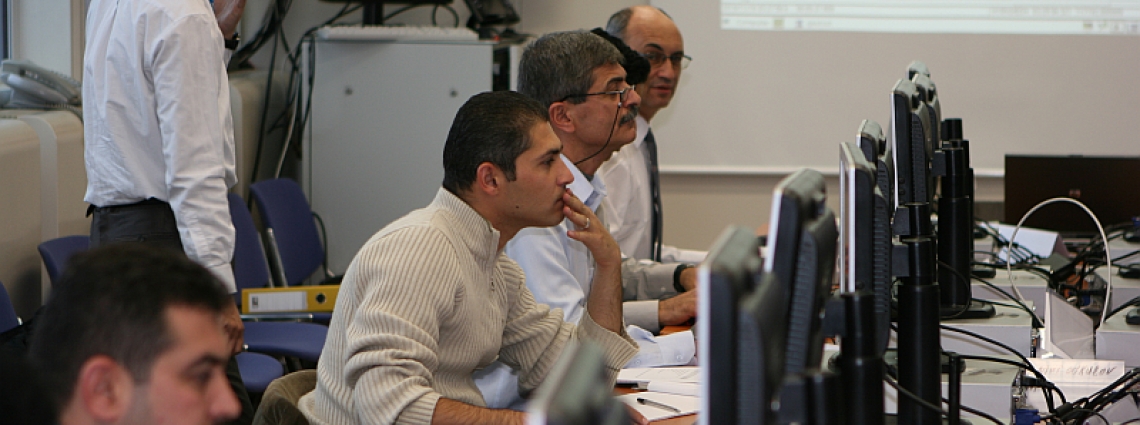Waveforms in the snow
Snow swirls outside the windows of a seventh floor meeting room in the Vienna headquarters of the Preparatory Commission for the Comprehensive Nuclear- Test-Ban Treaty Organization (CTBTO), where 14 men and women examine waveform patterns on computer screens.
Some of them, such as Russol Thaer Abdulrahman Al-Dulaimi, a software engineer from Iraq, have never seen snow before: the waveform images are more familiar to her.
Abdulrahman Al-Dulaimi, who works in Iraq’s National Monitoring Directorate, said she had been eagerly anticipating the course which ended on 17 December.
After two weeks of intense hands-on instruction, she has gained the seeds of knowledge by which Iraq will be able to make use of data from the CTBTO’s global network of monitoring stations.
“We were waiting for this workshop so that we can operate our National Data Centre (NDC) and work with other countries,” she said. Together with other participants in the workshop she had received an initiation to the course from the CTBTO through email tuition and a regional training course.
Some of them, such as Russol Thaer Abdulrahman Al-Dulaimi, a software engineer from Iraq, have never seen snow before: the waveform images are more familiar to her.
Abdulrahman Al-Dulaimi, who works in Iraq’s National Monitoring Directorate, said she had been eagerly anticipating the course which ended on 17 December.
After two weeks of intense hands-on instruction, she has gained the seeds of knowledge by which Iraq will be able to make use of data from the CTBTO’s global network of monitoring stations.
“We were waiting for this workshop so that we can operate our National Data Centre (NDC) and work with other countries,” she said. Together with other participants in the workshop she had received an initiation to the course from the CTBTO through email tuition and a regional training course.
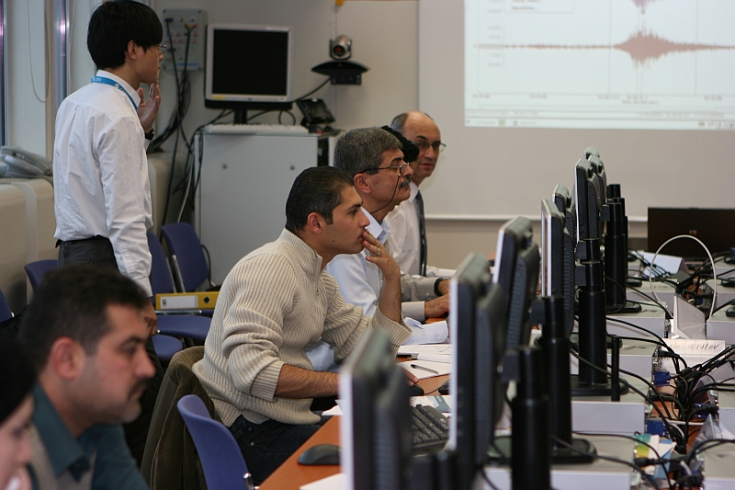
Intense hands-on study – part of the CTBTO’s goal to achieve “universality of understanding” about its verification system, December 2010.
Unfettered Access
The terms of the Comprehensive Nuclear-Test-Ban Treaty (CTBT) allow each of the 182 States that have signed it unfettered access to the vast trove of information that it collects about the planet.
To verify the Treaty a network of monitors provides a stethoscope to the Earth’s surface and oceans and also sniffs the atmosphere for any evidence of nuclear explosions. There are already 264 certified facilities in place (when the system is complete there will be 337) transmitting daily by satellite 10 gigabytes of data to the Vienna headquarters.
Some States access the raw data as soon as it arrives at the CTBTO’s International Data Centre (IDC); there are also refined versions available to Member States, the product of IDC analysts who review the flow of information.
The result is that the Treaty is not only supported by a planetary wide monitoring system and its own analysts but scrutinized by the eyes of a growing number of experts in its Member States as well.
For their part, each State needs its own NDC – it may be no more than a personal computer and an internet connection. Yet without being able to interpret the data, operators in the centres may as well be looking at falling snow.
The terms of the Comprehensive Nuclear-Test-Ban Treaty (CTBT) allow each of the 182 States that have signed it unfettered access to the vast trove of information that it collects about the planet.
To verify the Treaty a network of monitors provides a stethoscope to the Earth’s surface and oceans and also sniffs the atmosphere for any evidence of nuclear explosions. There are already 264 certified facilities in place (when the system is complete there will be 337) transmitting daily by satellite 10 gigabytes of data to the Vienna headquarters.
Some States access the raw data as soon as it arrives at the CTBTO’s International Data Centre (IDC); there are also refined versions available to Member States, the product of IDC analysts who review the flow of information.
The result is that the Treaty is not only supported by a planetary wide monitoring system and its own analysts but scrutinized by the eyes of a growing number of experts in its Member States as well.
For their part, each State needs its own NDC – it may be no more than a personal computer and an internet connection. Yet without being able to interpret the data, operators in the centres may as well be looking at falling snow.
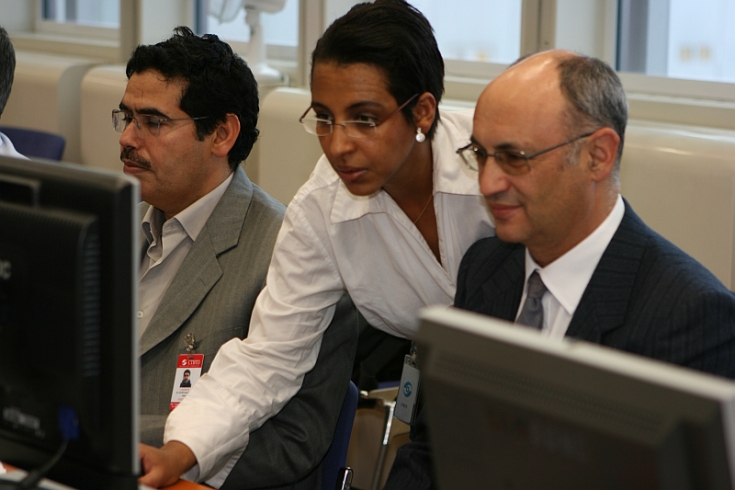
CTBTO training officer Misrak Fisseha, centre, offers advice to Yuri Bregman, from Israel, right.
Universality of understanding
“We talk about the universality of support for the CTBT because it’s been signed by nearly every country on Earth, but this is universality of understanding, this is what we are seeking to achieve,” said Lassina Zerbo, head of the CTBTO’s IDC, at the conclusion of the Vienna workshop.
And so the CTBTO is investing in filling in the gaps in countries that don’t yet possess the skills to make use of the CTBTO data to which they are entitled.
No matter how small the country that signs the Treaty it has the same technical rights as any other, says Zerbo. The system driving the Treaty provides a democracy of technology, he explained, and the CTBTO is striving to ensure the promise is fulfilled.
“We can build a monitoring system but if you don’t get people to understand what nuclear explosion verification means in the overall non-proliferation picture, if countries don’t understand its significance then we’re not doing our job,” he stated.
The CTBTO’s ongoing efforts to help Member States enjoy their privileges also reinforces awareness that the effectiveness and operation of the Treaty requires the participation of all its members, Zerbo said.
“We talk about the universality of support for the CTBT because it’s been signed by nearly every country on Earth, but this is universality of understanding, this is what we are seeking to achieve,” said Lassina Zerbo, head of the CTBTO’s IDC, at the conclusion of the Vienna workshop.
And so the CTBTO is investing in filling in the gaps in countries that don’t yet possess the skills to make use of the CTBTO data to which they are entitled.
No matter how small the country that signs the Treaty it has the same technical rights as any other, says Zerbo. The system driving the Treaty provides a democracy of technology, he explained, and the CTBTO is striving to ensure the promise is fulfilled.
“We can build a monitoring system but if you don’t get people to understand what nuclear explosion verification means in the overall non-proliferation picture, if countries don’t understand its significance then we’re not doing our job,” he stated.
The CTBTO’s ongoing efforts to help Member States enjoy their privileges also reinforces awareness that the effectiveness and operation of the Treaty requires the participation of all its members, Zerbo said.
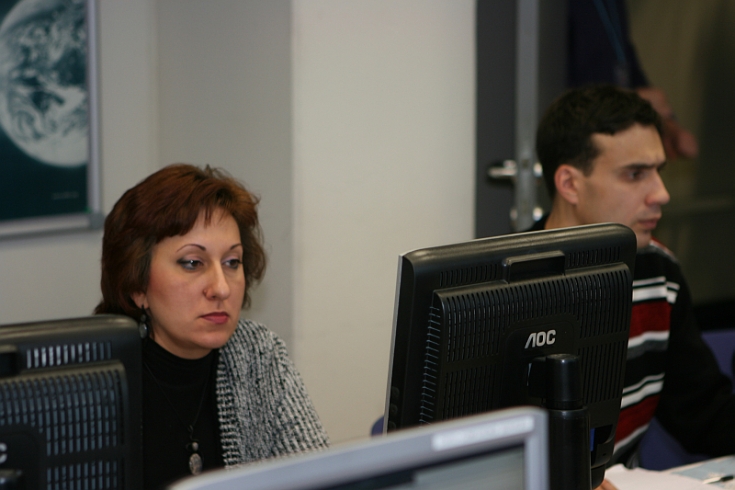
Anna Berezina, from Kyrgyzstan, studying seismic waveform data on her computer screen.
Better Seismic Knowledge
Ten countries were represented among the 14 participants before their computer screens in Vienna in December: Afghanistan, Iraq, Israel, Jordan, Kazakhstan, Kyrgyzstan, Lebanon, Oman, Qatar, Sri Lanka, Tajikistan and Yemen. Earlier in the year regional courses were held in locations as distant as Australia and Jordan.
Anna Berezina from Kyrgyzstan, principal engineer in her country’s seismological research programme, said that the benefit of the Vienna workshop was to obtain software and skills that will enable her to analyze seismic data from the CTBTO.
Although there’s a CTBTO auxiliary seismic monitoring station located in Kyrgyzstan, without the keys to its data, Berezina had been unable to use it.
The significance to Kyrgyzstan of better seismic knowledge was emphasized on the second day of the course, 8 December, when a 5.2 magnitude earthquake rocked the republic. The southern part of the country where the Tien Shan, Ferghana and Alai mountain ranges are shared with China and Tajikistan, is an earthquake prone zone.
“I think in future this course and further training will help us improve our monitoring,” said Berezina. “We received practical skills, not theoretical knowledge.”
Data from the CTBTO can help countries better undertake earthquake monitoring, Zerbo explained with the ability to interpret the data serving various other civil applications as well.
Ten countries were represented among the 14 participants before their computer screens in Vienna in December: Afghanistan, Iraq, Israel, Jordan, Kazakhstan, Kyrgyzstan, Lebanon, Oman, Qatar, Sri Lanka, Tajikistan and Yemen. Earlier in the year regional courses were held in locations as distant as Australia and Jordan.
Anna Berezina from Kyrgyzstan, principal engineer in her country’s seismological research programme, said that the benefit of the Vienna workshop was to obtain software and skills that will enable her to analyze seismic data from the CTBTO.
Although there’s a CTBTO auxiliary seismic monitoring station located in Kyrgyzstan, without the keys to its data, Berezina had been unable to use it.
The significance to Kyrgyzstan of better seismic knowledge was emphasized on the second day of the course, 8 December, when a 5.2 magnitude earthquake rocked the republic. The southern part of the country where the Tien Shan, Ferghana and Alai mountain ranges are shared with China and Tajikistan, is an earthquake prone zone.
“I think in future this course and further training will help us improve our monitoring,” said Berezina. “We received practical skills, not theoretical knowledge.”
Data from the CTBTO can help countries better undertake earthquake monitoring, Zerbo explained with the ability to interpret the data serving various other civil applications as well.
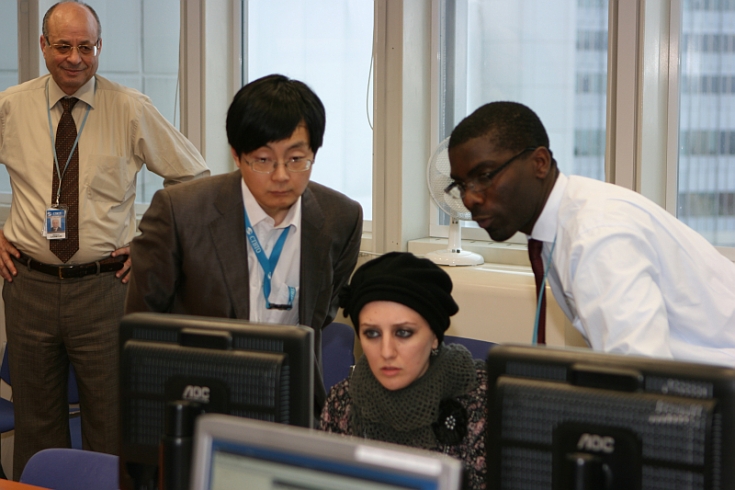
Russol Thaer Abdulrahman Al-Dulaimi, from Iraq is eager to work with scientists from other countries.
Improving Cooperation
Participants from other countries had different needs fulfilled by the workshop. Israel’s NDC has been functioning for more than 10 years and receives data continuously from the CTBTO, said Yuri Bregman, a researcher at the centre.
As a result, the centre has a complete global seismological picture, he explained. There are also two CTBTO seismic stations on Israeli soil operated by the Israel Geophysical Institute.
The course was “a unique opportunity” to learn more about the CTBTO, how it works and to obtain knowledge from leading experts in earth sciences, Bregman said. “I asked a lot of questions and received very thoughtful and good answers,” he continued. “This is part of the process for creating good scientific cooperation.”
And establishing better cooperation is among the goals of CTBTO training, said Zerbo: building bridges not only between operators of CTBTO facilities and technical experts in NDCs but between diplomats, who are responsible for signing and ratifying the Treaty and scientists, who are involved in its verification regime.
There’s another investment too from CTBTO training activities, Zerbo stated, and that’s to develop expertise that can be transferred within a country or regionally. “However you look at it, this activity has a multiplier effect.”
But for the CTBTO, training provides important feedback, he said. “Participants in these activities are helping us to understand what we are doing well and not doing well. We are forced to look at ourselves.”
Participants from other countries had different needs fulfilled by the workshop. Israel’s NDC has been functioning for more than 10 years and receives data continuously from the CTBTO, said Yuri Bregman, a researcher at the centre.
As a result, the centre has a complete global seismological picture, he explained. There are also two CTBTO seismic stations on Israeli soil operated by the Israel Geophysical Institute.
The course was “a unique opportunity” to learn more about the CTBTO, how it works and to obtain knowledge from leading experts in earth sciences, Bregman said. “I asked a lot of questions and received very thoughtful and good answers,” he continued. “This is part of the process for creating good scientific cooperation.”
And establishing better cooperation is among the goals of CTBTO training, said Zerbo: building bridges not only between operators of CTBTO facilities and technical experts in NDCs but between diplomats, who are responsible for signing and ratifying the Treaty and scientists, who are involved in its verification regime.
There’s another investment too from CTBTO training activities, Zerbo stated, and that’s to develop expertise that can be transferred within a country or regionally. “However you look at it, this activity has a multiplier effect.”
But for the CTBTO, training provides important feedback, he said. “Participants in these activities are helping us to understand what we are doing well and not doing well. We are forced to look at ourselves.”
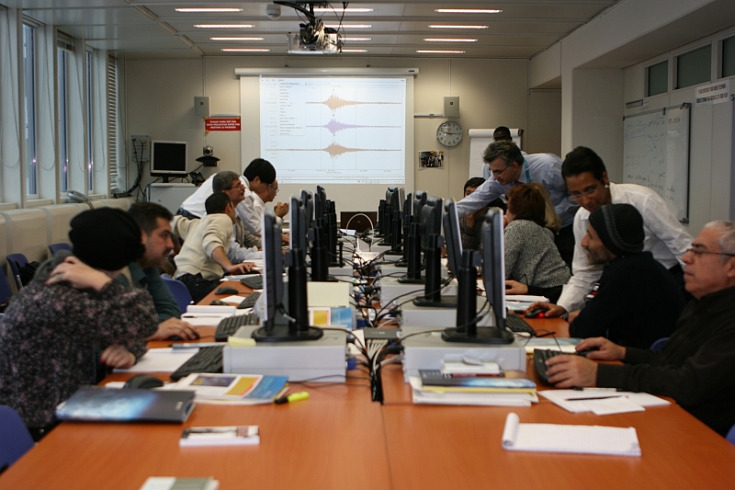
Fourteen participants from 10 countries took part in the two week long course.
